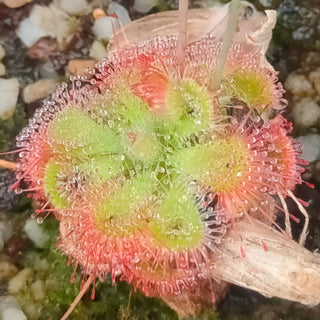Anemone nemorosa
EUROPEAN WOOD ANEMONE
- Unit price
- / per
Anemonoides nemorosa (syn. Anemone nemorosa), the wood anemone, is an early-spring flowering plant with common names including windflower, and European thimbleweed.
The flowers are solitary, with six or seven (and on rare occasions eight to ten) tepals (petal-like segments) with many stamens. In the wild the flowers are usually white but may be pinkish, lilac or blue, and often have a darker tint on the backs of the tepals.
The native range of Anemonoides nemorosa extends across Europe to western Asia, reaching as far south as the Caucasus Mountains in Turkey. It has been introduced into New Zealand and elsewhere. In North America, there are naturalized populations at well-known sites in Newfoundland, Quebec, and Massachusetts.
A. nemorosa is often found in shady woods. The species is common in the British Isles but it spreads very slowly there, by as little as six feet per century, so it is often used as an indicator for ancient woodland.
Type: Hardy perennial
Height: 8-10", 20-25 cm
Location: Shade or part shade
Hardiness zones: 5-8
Seeds per packet: 20
Sow just under the surface of the soil and water in. Leave them at room temperature for 6 weeks. This helps break the phytohormones which inhibit germination. They will not grow yet. Then a cooling period is required. Cover them with plastic and place in a fridge for 80 days. Be sure they stay moist. After the cold stratification period they are then brought back to a cool room (15-18C, 59-68F) for them to germinate. Germination can be erratic, generally 30-90 days after the warming period for most seeds, though some can take longer.
Ornamental use only. These seeds and/or plants may be poisonous.
Anemone nemorosa
EUROPEAN WOOD ANEMONE
- Unit price
- / per
Multiple secure payment options available.
Adding product to your cart
You may also like
Anemonoides nemorosa (syn. Anemone nemorosa), the wood anemone, is an early-spring flowering plant with common names including windflower, and European thimbleweed.
The flowers are solitary, with six or seven (and on rare occasions eight to ten) tepals (petal-like segments) with many stamens. In the wild the flowers are usually white but may be pinkish, lilac or blue, and often have a darker tint on the backs of the tepals.
The native range of Anemonoides nemorosa extends across Europe to western Asia, reaching as far south as the Caucasus Mountains in Turkey. It has been introduced into New Zealand and elsewhere. In North America, there are naturalized populations at well-known sites in Newfoundland, Quebec, and Massachusetts.
A. nemorosa is often found in shady woods. The species is common in the British Isles but it spreads very slowly there, by as little as six feet per century, so it is often used as an indicator for ancient woodland.
Type: Hardy perennial
Height: 8-10", 20-25 cm
Location: Shade or part shade
Hardiness zones: 5-8
Seeds per packet: 20
Sow just under the surface of the soil and water in. Leave them at room temperature for 6 weeks. This helps break the phytohormones which inhibit germination. They will not grow yet. Then a cooling period is required. Cover them with plastic and place in a fridge for 80 days. Be sure they stay moist. After the cold stratification period they are then brought back to a cool room (15-18C, 59-68F) for them to germinate. Germination can be erratic, generally 30-90 days after the warming period for most seeds, though some can take longer.
Ornamental use only. These seeds and/or plants may be poisonous.
















































